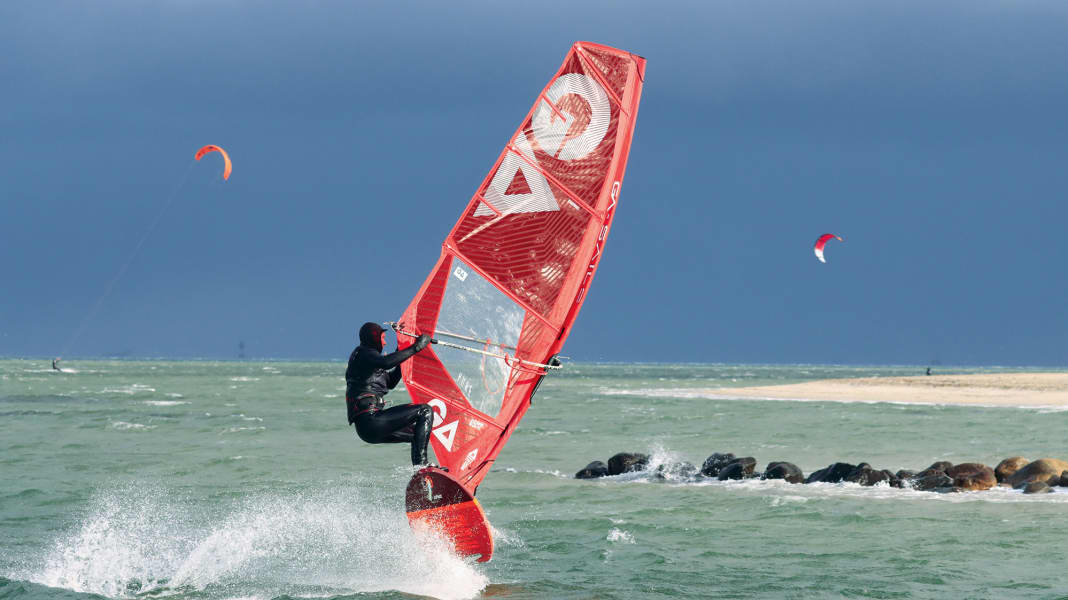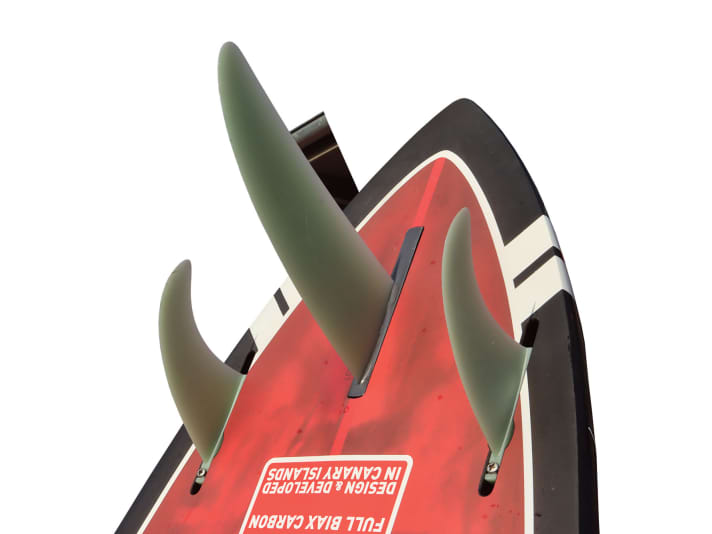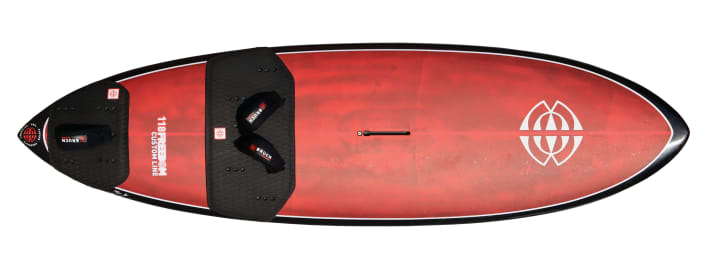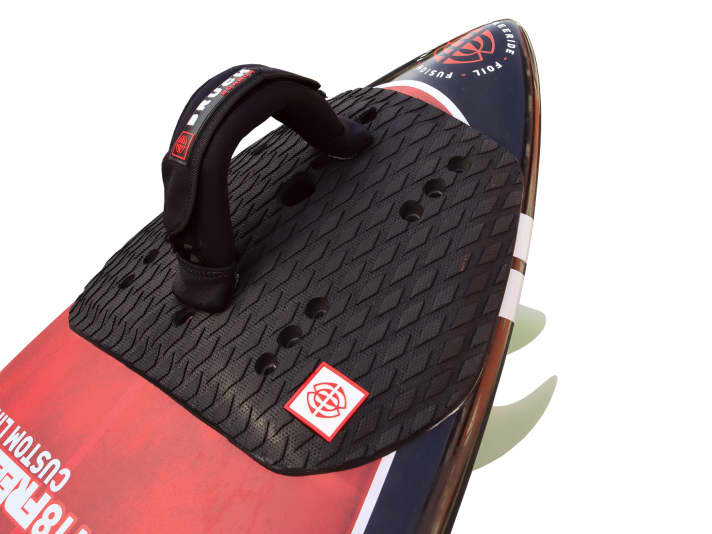
The outline of the Bruch Board Freedom 118 is reminiscent of an inflated wave board. The slim tail has obviously been optimised for easy turning, while the deck offers a 3-loop position as well as a freeride position that is offset far to the outside. The board, which is built in carbon sandwich construction, comes with a matching board bag and two fin setups. In the thruster setup, the centre fin has been positioned far forward on the base, while the 36 freeride fin is set slightly back - a sensible idea to combine turning ability and speed/altitude. One small drawback: the hole for mounting the Powerbox fin is located directly at the back under the centre strap, which can make mounting a little complicated but doesn't interfere on the water. Further sizes with 88/98/108 & 128 litres are to follow in summer 2022.

Bruch Boards Freedom on the water:
For use in bump & jump and small surf conditions, the Freedom should be equipped with a 3-loop setup and thruster fins. This allows it to get up to speed and offers a good mix of control and a sufficiently free ride on the straights. Thanks to the wave-orientated shape, the board is nice and soft on the edge and pulls variably through the turn, only the gliding characteristics in the jibe are not at the top level. On the other hand, the board can even be pushed into frontside turns and turned over the back foot to cutback at the lip of the wave - a rarity for boards of this size - provided the rider weighs the necessary kilos.
When equipped with a single fin, the loops should be moved outwards and the mast foot moved to the front third. This adjustment noticeably extends the range of use, allowing the Freedom to start planing earlier, achieve a freer planing position on the straights and also a higher top speed. In manoeuvres, the board is as soft and grippy on the edge as expected. Here too, the planing potential is somewhat below average compared to pure freeride boards in the 115-litre class - certainly a consequence of the very narrow tail. In the jibe, the Freedom scores points with all those who can already ride safe power jibes with variable radii and potential for carving 360s & co. However, intermediates and jibe novices will lack some stability.

surf conclusion:
The Bruch Boards Freedom should be seen as a sporty freewave or bump & jump board for jumping, heating and wave riding, which can also be used for freeriding with a 6.5 metre sail - all in all, this results in a wide range of applications. However, if you mainly want to freeride or foil with sails over 6.2 square metres, you should consider a pure freerider with a wider tail.
Technical data Bruch Boards Freedom
- Size: 118 litres
- Length: 235 cm
- Width:65 cm
- Weight:7.56 kilos (surf measurement)
- Prices: 2281 Euro
You can find more information about the Bruch boards here->

